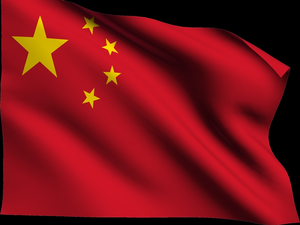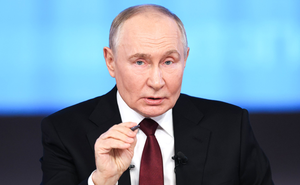How CCP is architecting a new world order (IANS Analysis)

New Delhi, Feb 25 (IANS) CCP is positioning itself not just as a regional power but as the central player in an emerging new world order. With every move, Beijing is sending a clear signal: the era of Western dominance is drawing to an end, and China’s moment has arrived.
In recent years, Chinese Communist Party (CCP) has embarked on a series of bold, strategically transformative initiatives that are not only reshaping global order but also redefining the very concept of national security.
Seizing the moment, Beijing has advanced a comprehensive strategy aimed at strengthening its position while challenging post-Cold War world order that has long been dominated by Western powers.
The scope of Beijing’s ambitions has expanded to unprecedented levels—ranging from large-scale infrastructure projects spanning continents to advancements in technology and energy.
Each initiative showcases a determined effort to reposition China at the centre of a new global hierarchy. Unfolding, an era of calculated moves, technological breakthroughs, and strategic posturing, all of which are poised to fundamentally shift global power dynamics and shape international landscape for decades to come.
It started with a quiet, yet significant move into the heart of Africa. Under Belt and Road Initiative, a series of 30 clean energy projects has begun to take shape across the continent, weaving a complex web of CCP influence in countries long neglected by the West. Solar farms, wind turbines, and hydroelectric plants are rising where darkness and poverty once reigned, promising economic growth and energy independence.
To many, it seems like the kind of philanthropy the world needs — Beijing is playing the role of the benevolent superpower, offering solutions where others have failed.
Yet, as Beijing’s footprint expands, its motives become clearer. This is not just about lighting up villages or building infrastructure — it’s about creating a sphere of influence.
The “Green Silk Initiative,” as some have called it, is a tool for political leverage, an economic dependency cloaked in the rhetoric of environmentalism and mutual benefit. For the CCP, Africa’s energy future is not just about growth; it’s about aligning a vast continent with its own vision for the global order, a vision that has no place for Western hegemony.
Simultaneously, high in the Tibetan plateau, another monumental CCP project is taking shape—one that threatens to reshape the region’s future and leave its critics scrambling for answers.
The CCP’s proposed hydropower dam, set to generate 300 billion kilowatt-hours annually, is poised to become the world’s largest hydropower project, with an estimated cost of $137 billion.
Beyond the eye-popping numbers, the scale of this project has sparked intense controversy. Tibetan exiles and environmental groups warn that the dam could irrevocably damage fragile ecosystems and desecrate landscapes that have been sacred for centuries.
The Dalai Lama, exiled since the CCP’s occupation of Tibet, has repeatedly voiced concerns, cautioning that such large-scale developments, masked as progress, would scar a land steeped in ancient culture and unparalleled natural beauty.
For many, the dam is not simply an energy project—it is a symbol of cultural and ecological destruction, a stark manifestation of a regime willing to sacrifice the sacred in its relentless pursuit of power.
The ambitions of the CCP, however, extend far beyond energy and infrastructure, reaching into the very heart of technological advancement.
The unveiling of the CR450 high-speed train serves as a striking demonstration of China’s emerging engineering prowess, as well as a symbol of its strategy to dominate the global transportation landscape.
The CR450, now recognised as the world’s fastest train, is more than a marvel of modern engineering—it is a direct challenge to the West’s technological supremacy.
Designed to connect major cities across China with unprecedented speed and efficiency, the train cuts through the landscape with such force that it feels less like a transportation system and more like a statement. The rapid development and deployment of such projects place Beijing not only at the cutting edge of infrastructure but in a strategic position to export its technology globally, further entrenching its economic and political reach across the globe.
This is not a game of pure infrastructure, however. As much as the CCP seeks to dazzle the world with its technological feats, it also seeks to control the future of energy and power itself. The “Artificial Sun” project, another CCP innovation, has captured the global imagination.
Under the banner of the Celestial Fusion programme, Chinese scientists recently set a world record by sustaining plasma for an unprecedented 1,066 seconds.
This achievement, presented with immense fanfare by the Chinese state, positions the China as a leader in the race for clean, limitless energy. But in many ways, the artificial sun represents more than just a scientific breakthrough.
For many critics, it is a carefully choreographed piece of state-sponsored propaganda, designed to project power and technological dominance. CCP is positioning itself not just as a global economic power but as a potential monopoly on the energy sources of the future.
The implications of such a shift cannot be understated. The ability to control global energy markets and dictate terms for future energy access will fundamentally reshape the power structures of the 21st century.
Beijing’s naval ambitions, too, have grown exponentially. The unveiling of the Type 075 amphibious assault ship is a powerful signal of the CCP’s People’s Liberation Army (PLA) growing military might and its intent to dominate the seas. This vessel, one of the largest of its kind, is capable of deploying large forces quickly and efficiently across vast stretches of the ocean.
The message is clear: CCP is ready to assert itself as a maritime power capable of protecting its interests in critical regions such as the South China Sea, where tensions with Southeast Asian nations and the United States have been escalating for years.
The Type 075, with its cutting-edge technology and imposing size, epitomises Beijing’s broader naval ambitions to challenge both South Asian and Western naval presences in the region.
More than just a weapon, the ship serves as a floating symbol of Beijing’s power projection—an embassy on water, reinforcing the message that China’s influence no longer resides within its borders but extends to critical strategic points across the globe.
As these monumental projects unfold, the CCP’s digital ambitions have also come to the fore. The launch of Deepseek R1, an open-source artificial intelligence model, shook the foundations of global financial markets. In a dramatic twist, the disruptive power of Deepseek R1 is credited with triggering a massive revaluation that reportedly wiped out nearly a trillion dollars in U.S. stock market value.
But what makes Deepseek R1 particularly unsettling is its origins.
The CCP is not merely advancing its own AI research — it is leveraging the very tools that were once thought to be the exclusive domain of Western tech giants. Deepseek R1 relies on open-source research and platforms, which means that the next wave of AI breakthroughs, instead of emerging from trillion-dollar western companies with exclusive access to compute power, will come from those who can best refine, iterate, and optimise open-source research.
This ability to harness the power of open-source research and platforms puts the CCP in a commanding position in the race for the future of AI. Its success further emphasises a key aspect of CCP’s broader technological strategy: CCP is not just building its own technological infrastructure; it is actively rewriting the rules of global technological competition, undercutting Western dominance in the process.
While the world struggles to cope with the transformative potential of 5G, the CCP is already in the process of developing 6G.
With prototypes reportedly outperforming even Elon Musk’s Starlink, the development of 6G could mark a watershed moment in global communications.
The CCP’s technological edge in this space is not just about faster speeds and more reliable connections; it is about control over the infrastructure that will define the future of global communication, commerce, and security. The very idea that a nation-state could control the flow of information on a global scale is a chilling prospect, and it highlights the stakes of the ongoing technological race between East and West.
The military dimension of the CCP’s rise, too, cannot be ignored. The unveiling of the PLA’s first sixth-generation fighter jet is a clear indication that the country is not only catching up with Western military technology—it is setting its sights on surpassing it.
Equipped with advanced stealth technology and designed for operation in the most contested airspaces, this new aircraft promises to shift the balance of power in the skies. With PLA’s growing arsenal of high-tech weaponry, including hypersonic missiles and advanced air defence systems, the global military order is beginning to look increasingly multipolar.
The era of unquestioned American and Russian military dominance is drawing to a close, and China’s military ascendancy is one of the most significant challenges the west will face in the coming decades.
CCP’s actions since the past few years have been noteworthy. From energy projects in Africa to massive infrastructure investments in Tibet, from record-breaking trains to groundbreaking military technology, CCP is positioning itself not just as a regional power but as the central player in an emerging new world order.
With every move, Beijing is sending a clear signal: the era of Western dominance is drawing to an end, and China’s moment has arrived. The world now stands at a crossroads, with the outcome of this high-stakes game of geopolitics set to shape the 21st century in ways that are still difficult to fully comprehend. What is certain, however, is that the race for global supremacy has entered a new, decisive phase—one where every move counts, and the stakes have never been higher.
(Rahul Pawa is an international criminal lawyer and director of research at New Delhi based think tank Centre for Integrated and Holistic Studies.)
–IANS
rahul/




